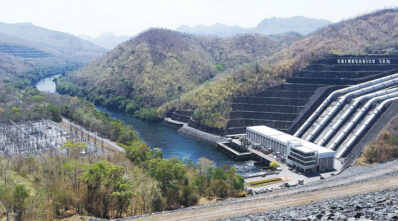Growing consensus for Hydropower generation and storage
By EPR Magazine Editorial November 30, 2022 6:39 pm IST
By EPR Magazine Editorial November 30, 2022 6:39 pm IST

India’s involvement with hydropower began in 1902 with the development of the Shivasamudram hydropower project (42 MW) in Karnataka in collaboration with Boving London, a British Engineering Company.
The present installed capacity of small hydro
After more than a century, India’s current installed capacity as of September 30, 2022, is approximately 46,850 MW, while renewable energy’s current installed capacity is 1,18,080 MW. The hydropower capacity addition target for 2022 is 1080 MW, but only 120 MW had been added to the grid as of the end of September 2022.
Small hydro has an installed capacity of 4,899 MW, whereas solar has an installed capacity of 60,814 MW. Central utilities currently account for 15,665 MW of hydropower in India, state SEBs account for 27,254 MW, and the private sector accounts for 3,931 MW.
What is striking is the country’s modest pace in adding hydroelectric capacity. This is due to various factors previously studied and written about by prominent industry figures. Free power to states; a lack of debt injection; statutory clearances and delays in their implementation; local concerns; land acquisition and compensation; and afforestation plans, among other things, have long hampered the development of this sector. Thermal power will continue to be the country’s principal source of base load electricity, and phasing it out gradually in the coming years must be observed in its execution.

Advantages of Hydropower storage
Hydropower has several advantages. Hydropower and pumped storage will be critical in assisting with climate change mitigation. This would be achievable by providing necessary power, storage, and flexibility services.
The International Hydropower Association (IHA) claims, “hydropower is the world’s greatest source of low-carbon electricity and the overlooked behemoth of renewables. In 2021, hydropower will generate approximately 16 percent of global electricity (4,252TWh), roughly the same as all other renewables combined.” True to its reputation, hydropower is the cleanest and greenest renewable energy source and the future of storage via pumped storage plants.
Energy storage for fuel-based power sources
Battery storage is not only expensive, but it also has scalability and recycling issues. Wind and renewable solar sources alone cannot sustain the green movement of the globe on their own. Falling back on fossil fuel-based power sources is not a good solution as it defeats the very purpose of the fight against climate change. Hydropower is fed by water to generate it and has minimal impact on the environment and the ecosystem. In the end, and the long term, the solution to fossil fuel replacement is hydropower.
According to IHA, various studies have indicated more than enough global potential to achieve 1,200 GW of hydropower by 2050. Tapping it will be key to unlocking the globe’s net zero ambitions that are being heralded by the COP series of conferences on climate change.
We use cookies to personalize your experience. By continuing to visit this website you agree to our Terms & Conditions, Privacy Policy and Cookie Policy.